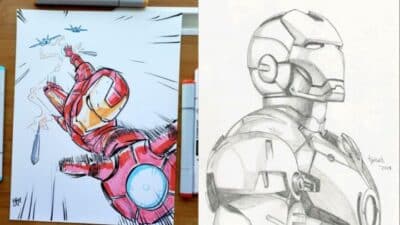Kids love to draw, and you might notice that drawing isn’t just fun—it’s a powerful way for children to explore their creativity and communicate their thoughts. Drawing helps kids develop important skills like focus, problem-solving, and fine motor control while giving them a safe outlet for self-expression. Whether your child is sketching simple shapes or dreaming up colorful scenes, each line on the page helps them make sense of the world.
Encouraging your child to draw can make a big difference in their confidence and ability to share feelings. With some simple guidance, drawing can become a joyful part of your daily routine and a lasting hobby for your child.
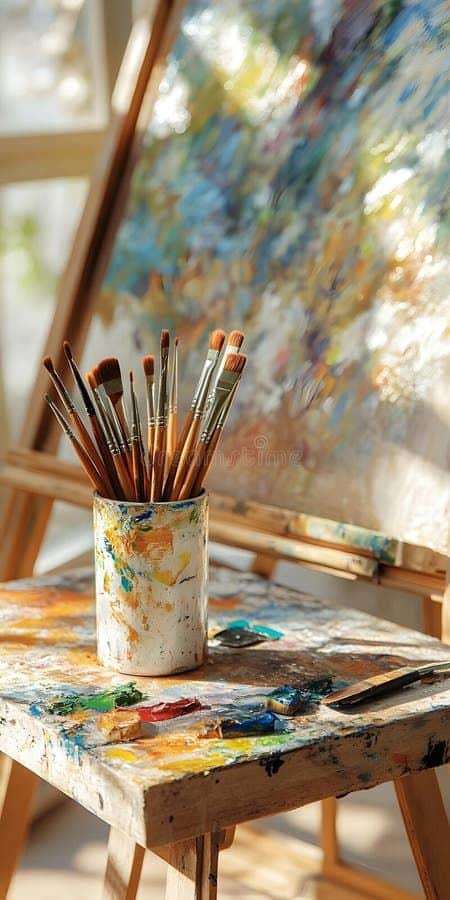
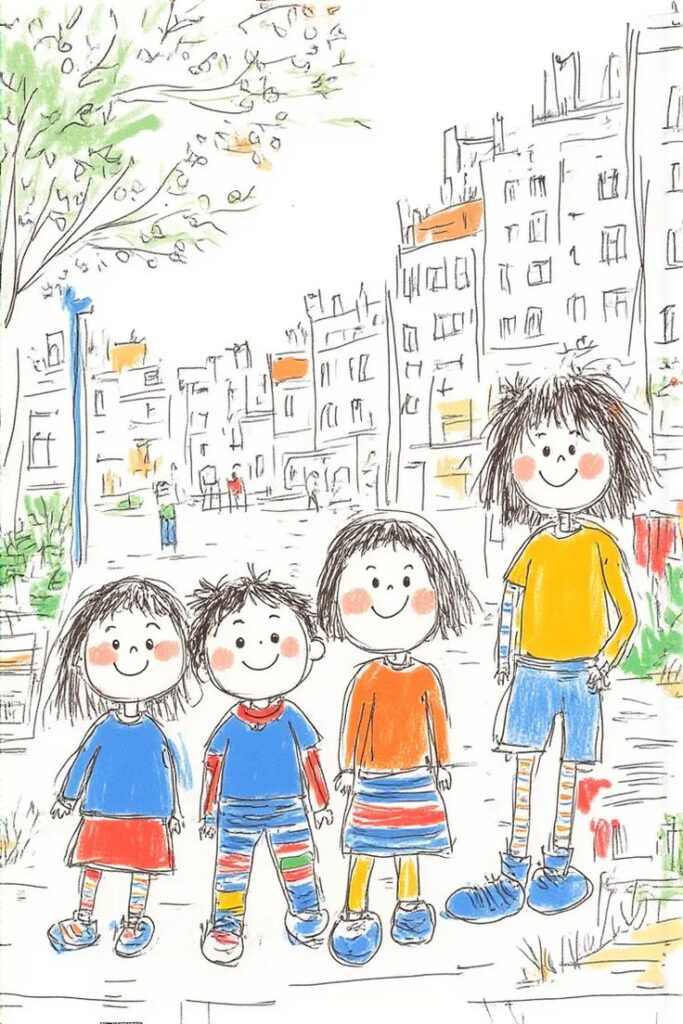
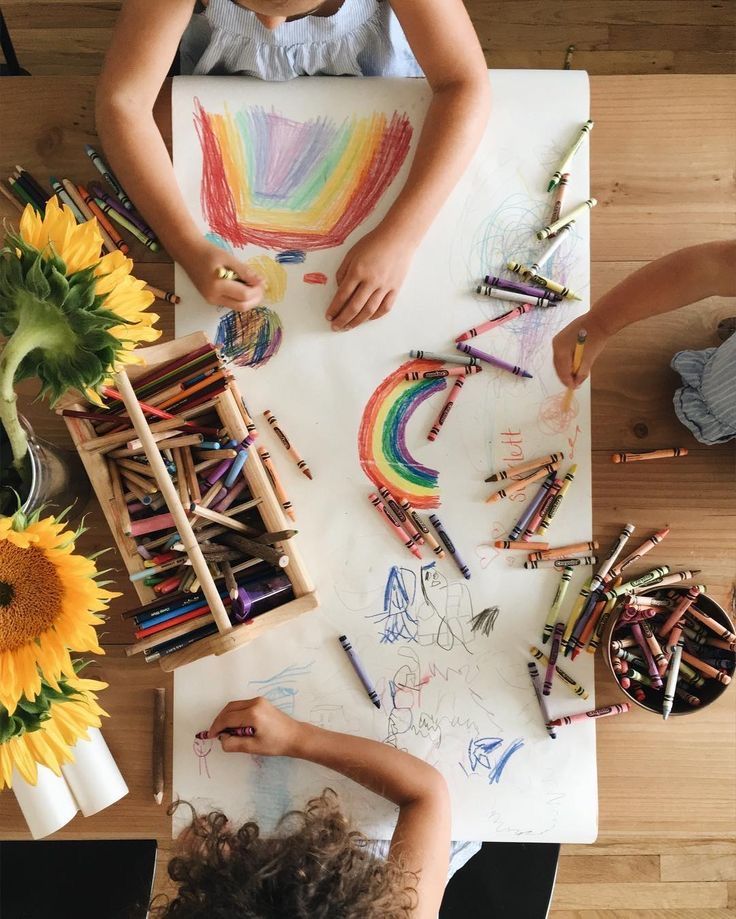
Key Takeaways
- Drawing supports kids’ skill development and creativity
- Simple activities and guidance help children grow through art
- Every child benefits from expressing themselves through drawing
Understanding Kids Drawing
Children’s drawings provide insight into their mental development, emotional states, and everyday experiences. These creative works often reflect a child’s unique perspective and help adults see how children process the world around them.
What Defines Children’s Drawings
Children’s drawings are usually simple and lacking in realistic details. You might notice stick figures, bold colors, and large shapes filling the page.
Kids often draw to express feelings or ideas rather than to create realistic images. You’ll see imaginative details that may not appear in real life, like purple trees or smiling suns.
Most children’s drawing styles focus on showing something important to them, such as family members or pets, sometimes in exaggerated proportions. The way space is used on the paper also matters—drawings that take up the whole page often indicate self-confidence and sociability, while smaller, isolated figures may suggest shyness.
The Evolution of Drawing in Early Childhood
Children’s drawings go through recognizable stages as kids grow. Very young children start with random scribbles, exploring the feeling of movement and color.
As fine motor skills develop, drawings become more intentional, with shapes and lines forming patterns. By age 3 to 4, you often see “tadpole people”—simple circles with lines for limbs.
During early school years, drawings start to include more detail and organization. Children might add backgrounds, clothing, or attempt to show action. The progression in children’s drawing reflects not just artistic skills, but also cognitive and emotional development, such as memory, observation, and problem-solving.
Common Themes in Children’s Art
Your child may often draw family members, friends, or favorite animals. Houses, trees, and suns are frequently featured, sometimes with unusual colors or exaggerated features.
Emotions can show through both subject matter and color choice. For example, happier scenes may feature bright colors and smiling figures, while worries or fears might be expressed as storms, monsters, or darker tones.
Many children’s drawings also reflect their current experiences—holidays, school, or recent adventures appear often. You may notice repeated patterns or images, which might connect to what your child is thinking about most. Using these drawings, you can start to understand what matters most in their everyday lives.
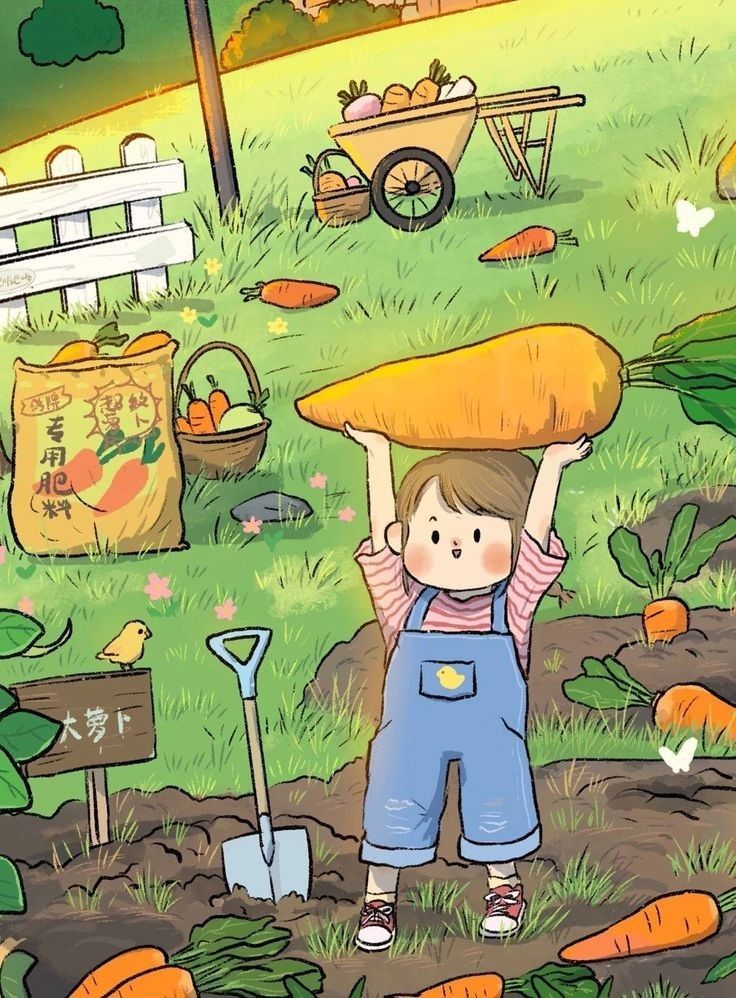
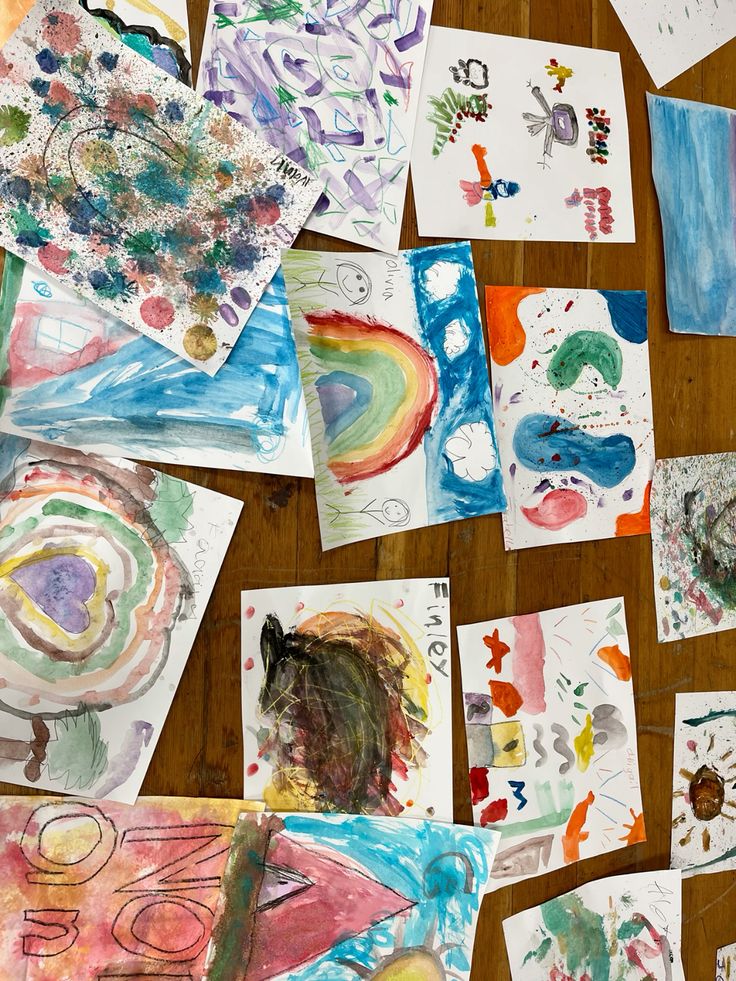
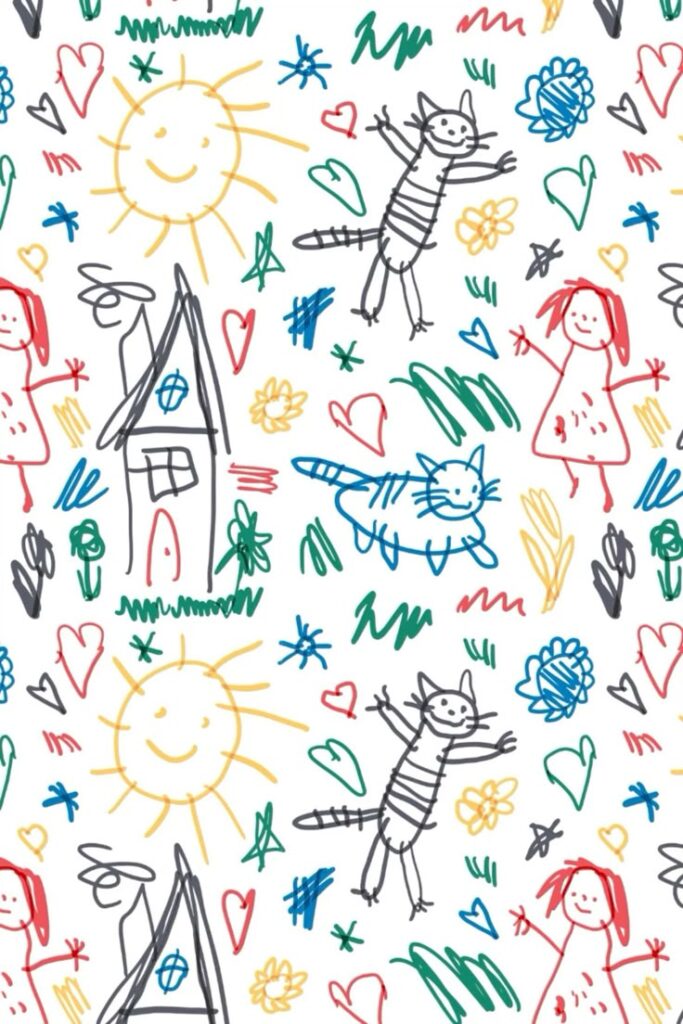
Stages of Children’s Drawing Development
As children develop, their drawings evolve through distinct stages that reflect their growing understanding and coordination. Individual progress may differ, but many children follow similar patterns as they move from basic marks to more realistic depictions.
From Scribbles to Enclosed Shapes
When your child first starts drawing, you’ll likely notice a stage filled with energetic, random marks. These are known as scribbles and typically appear between ages 1 and 3. At this point, the focus is on the act of drawing rather than the result. Children explore how it feels to move their hand and see lines appear on paper.
Gradually, these marks change. Your child gains control, and you may start to see lines and simple patterns. This stage bridges into creating enclosed shapes, like circles and ovals. These forms usually begin emerging between 2½ and 4 years old. Enclosed shapes are important because they represent your child’s growing ability to plan and control their movement, setting the stage for representing actual objects.
Key Features Table:
| Stage | Typical Age Range | Common Marks |
|---|---|---|
| Random Scribbling | 1-2½ years | Swirls, zigzags |
| Controlled Scribbling | 2-3 years | Repeated lines, arcs |
| Enclosed Shapes | 2½-4 years | Circles, loops |
Visual Schema and Symbolic Representation
Once your child starts forming enclosed shapes, these forms become part of a budding visual schema. Visual schema means your child is beginning to use shapes and lines intentionally to represent real things, even if they don’t look realistic to adults. For example, you might see a classic “tadpole person” with a round head and lines for legs.
During this stage, children experiment with symbols to stand for people, animals, and objects. Their drawings are simple but meaningful to them. For you as a parent or caregiver, it’s helpful to encourage them to talk about their creations, fostering language and imaginative thinking alongside their drawing skills.
Common images include houses with simple geometric shapes, suns, and stick figures. This phase often occurs from age 4 to about 7, continuing as your child’s ability to organize and place elements improves. Details start appearing, like eyes or buttons, as children try to depict the world more fully.
Transition to Realism
As children approach ages 7 to 9, their drawings show a clear shift toward realism. Now, you’ll notice more recognizable scenes, perspective, and attempts at accurate proportions. Children start observing their environment more carefully, wanting their drawings to “look right” compared to real life.
You’ll likely see details such as overlapping objects, backgrounds, and even attempts at shading. Children might use reference images or copy what they see. This stage often includes frustration if drawings don’t match intentions, so your support can help maintain their confidence.
While progress varies, the move from simple symbols to realistic images reflects increased visual understanding and fine motor coordination. Some children may linger in earlier stages, while others eagerly experiment with new drawing techniques and ideas.
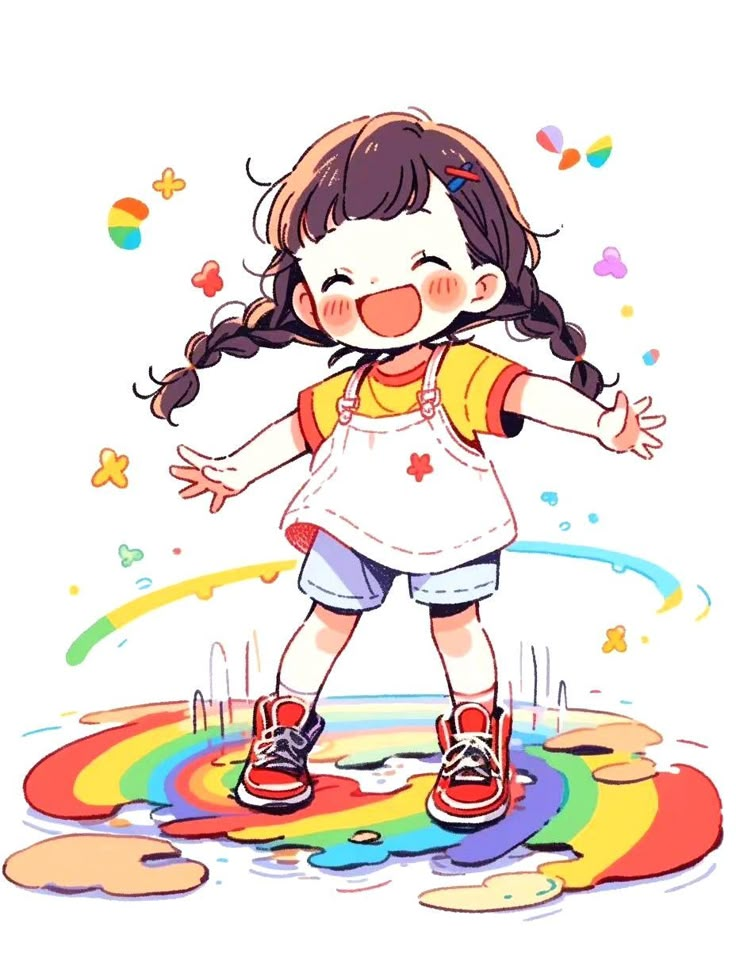
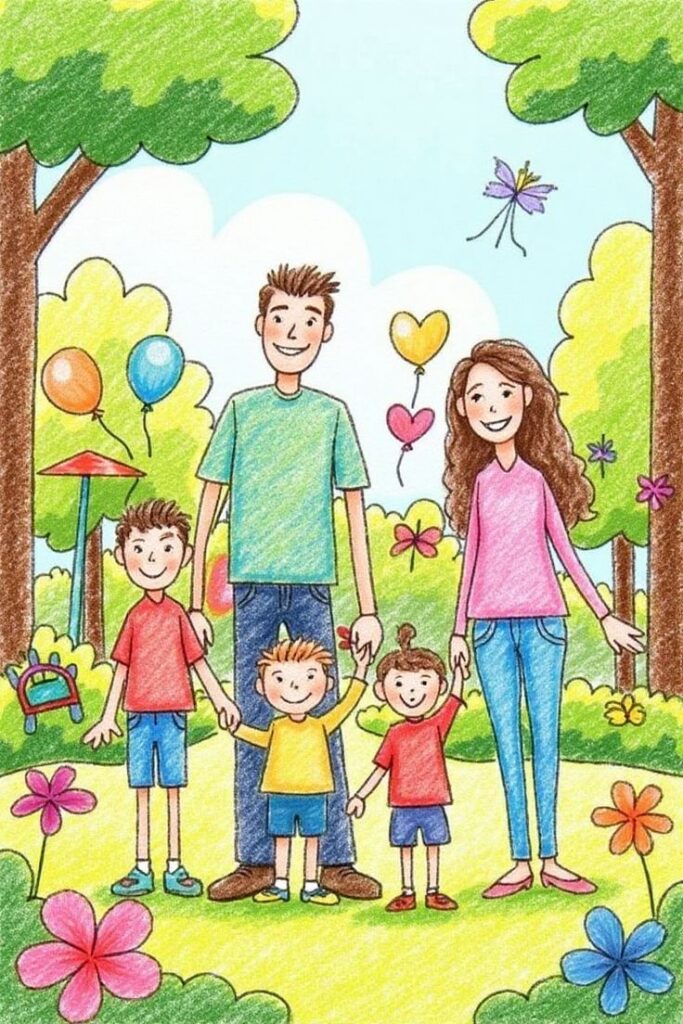
Benefits of Drawing for Kids
Drawing does far more than fill up time—it directly supports a range of skills that will benefit your child in daily life and future learning. Through drawing, your child’s hands, mind, and creative thinking are constantly at work.
Enhancing Fine Motor Skills
When your child holds crayons, pencils, or markers, every line they draw strengthens small muscles in their fingers and hands. These fine motor skills help your child master important everyday tasks, like buttoning a shirt or tying shoes.
Drawing also improves hand-eye coordination. Your child learns to guide their hand based on what they see and imagine. Over time, this steady practice makes handwriting and using tools much easier and less frustrating.
Simple activities—such as tracing, coloring inside lines, or creating shapes—each boost these skills. They can even prepare your child for the more complex motor demands found in school or sports.
Boosting Imagination and Creativity
Drawing lets your child turn their ideas into visible stories, characters, and worlds. Whether it’s a rocket ship or a pretend animal, drawing is a playful way to invent and dream.
This creative freedom supports emotional expression, especially for children who may not always have the words for their feelings. Art provides a safe space for your child to try new ideas without judgment.
Some ways to nurture imagination while drawing:
- Encourage creating made-up creatures
- Suggest drawing alternate endings to stories
- Provide open-ended prompts, like “What does your dream house look like?”
Letting your child explore their ideas on the page helps build confidence and original thinking.
Problem-Solving with Puzzles and Art
Drawing isn’t just about making pictures; it has a lot in common with solving puzzles. Your child makes choices about colors, shapes, and space every time they draw.
Planning a drawing—like fitting objects into a scene or making patterns—calls for both logic and creative thinking. This practice helps your child learn to break down big tasks into manageable steps.
Try combining art and puzzles by giving challenges, such as drawing a picture with only a few shapes or copying a simple scene. These activities sharpen observation skills and teach patience as your child works through trial and error to reach their goal.
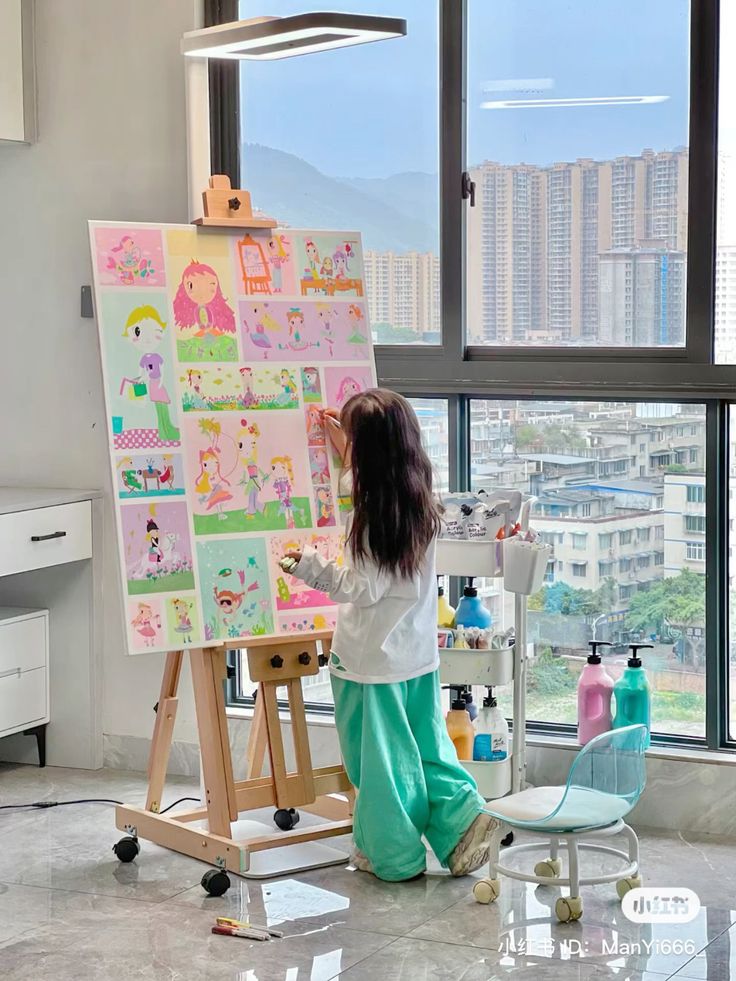
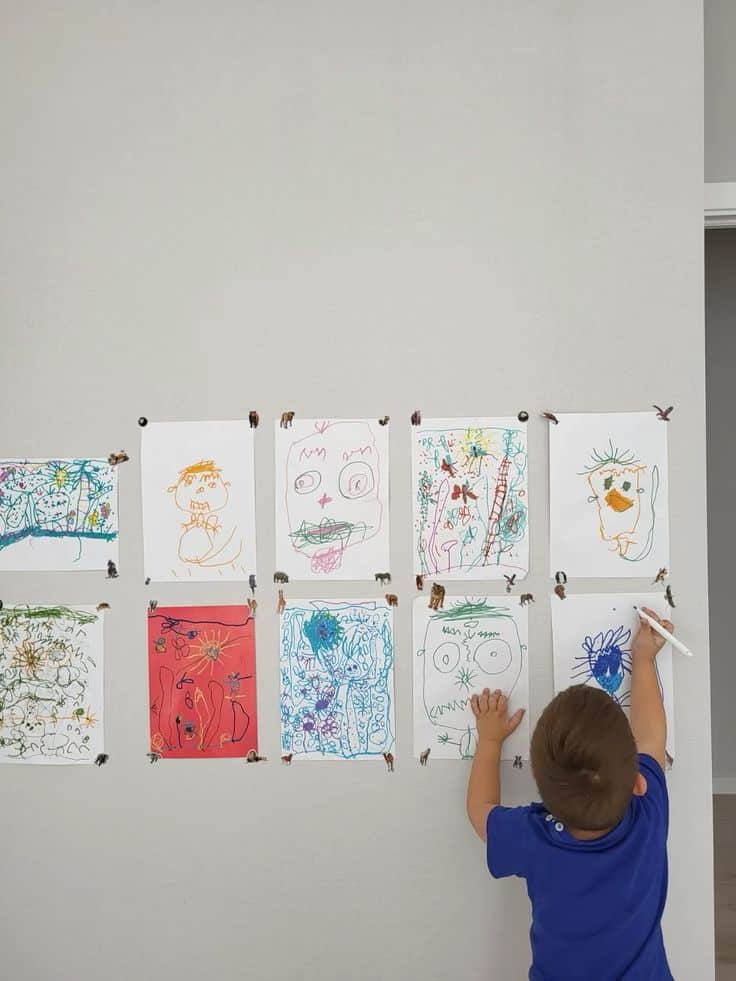
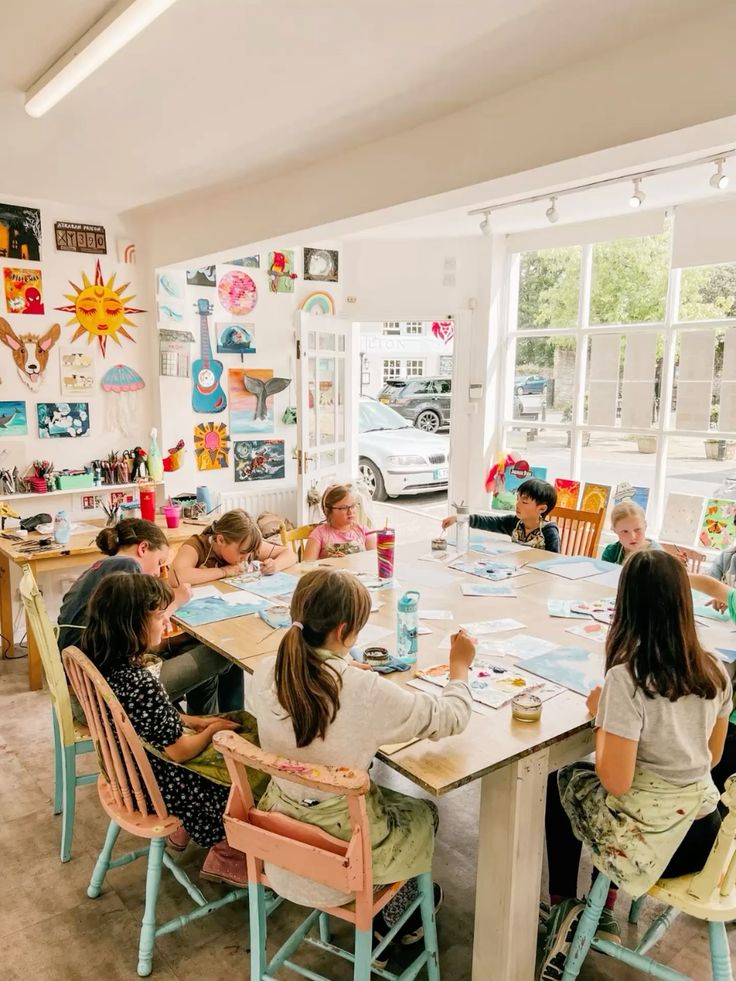
Guiding Kids Through Drawing
Learning to draw is easier when you give kids practical support and encouragement. Both home and classroom environments can help children build important drawing skills by providing the right resources and feedback.
Supporting Drawing Skills at Home
You can help kids develop their drawing abilities by making creative time a regular part of your day. Set up a simple art space with paper, pencils, markers, and crayons within easy reach. Encourage free drawing as well as guided activities by showing simple steps or using online tutorials, such as those from Art For Kids Hub.
Try drawing together so your child feels supported rather than judged. Offer specific praise, like “I love the shapes you used for that cat,” instead of only saying something is “nice.” This builds confidence and motivates further practice. You might also challenge kids to draw objects from nature, family pets, or items around the house.
A weekly drawing theme—for example, “draw something you saw today”—can inspire creativity. Combining drawing with other activities, like reading a story and then illustrating a scene, helps reinforce both artistic and literacy skills.
Role of Teachers and Art Lessons
Teachers play a key role in introducing art lessons that build drawing skills step by step. In classroom settings, structured projects like still-life drawings or seasonal scenes help children explore new techniques and materials.
Art lessons often begin with simple shapes and lines. Gradually, your child will learn about shading, perspective, and using color. Teachers encourage experimentation and model how to use drawing tools effectively.
You might notice that good art instruction includes both individual projects and group activities. This helps students share ideas, get feedback, and learn how to appreciate others’ artwork. Incorporating lessons inspired by programs or books, such as “Drawing with Children” by Mona Brookes, can make the process more accessible for a range of abilities.
A supportive classroom environment values effort and progress over perfection, helping every child feel welcome in expressing their creativity.
Popular Techniques and Activities
Kids often enjoy learning to draw through structured step-by-step guidance, practicing with fun themes, and using drawing as a tool for visual storytelling. Simple projects can help develop both fine motor skills and creativity while making drawing approachable for everyone.
Drawing People and Characters
Drawing people is a classic starting point for kids. Begin with easy stick figures or simple shapes to map out the head, body, arms, and legs. As confidence builds, try basic proportions and features like eyes, noses, mouths, and hairstyles.
Practice is key, so consider drawing multiple characters with different expressions or outfits. Many children find it helpful to follow along with directed drawing activities, which break down the process into small, manageable steps. This method lets you see clear progress.
Making use of references from cartoons, storybooks, or family photos can provide inspiration and context. You might also encourage drawing self-portraits or pictures of family and friends to personalize the experience.
Here’s a quick guide for drawing a simple character:
| Step | Action |
|---|---|
| 1. Outline | Draw head, body, limbs as shapes |
| 2. Features | Add eyes, nose, mouth |
| 3. Details | Draw hair, clothes, and extras |
Exploring Illustrations and Storytelling
Illustrations allow you to bring stories and ideas to life. Start by choosing a familiar story or inventing a new one. Break it down into a few scenes and plan what you want to show in each drawing.
You don’t need advanced skills to tell a story visually. Drawing sequential pictures—like a comic strip—makes it easier to organize ideas and see your story unfold. Kids often enjoy inventing their own characters or animals for these scenes.
For storytelling, use a mix of basic shapes, expressive faces, and clear backgrounds to set the scene. You can add dialogue bubbles or labels to build narrative skills and help the viewer follow along. Experiment with color and details to make each illustration unique.
Try these tips:
- Start small with a three-panel comic
- Use bold lines for characters
- Keep backgrounds simple at first
- Add fun speech bubbles for dialogue
Influential Figures and Theories in Children’s Drawing
Understanding how children create drawings helps you see how their thinking and motor skills develop. Certain researchers have shaped our view of children’s artistic progress by studying the patterns and changes in their drawings.
Goodman and Artistic Development
Nelson Goodman is known for exploring symbols and how children represent ideas visually. He suggested that kids don’t just copy the world—they learn to use marks, shapes, and lines as signs to stand for things or people. This process is what helps you identify meaning in children’s artwork.
Goodman’s work highlights that drawing is symbolic, much like language. Children use schemas, or typical ways of drawing familiar subjects, which change as they grow. For example, early human figures may look like circles with legs, but with age, the drawings gain more detail and accuracy.
You’ll notice that these stages are not simply about skill—they reveal how a child interprets their environment. This focus on meaning and symbolization changed how educators and psychologists understand children’s art.
Key Points:
- Children’s art is symbolic, not just imitative
- Stages reflect cognitive and perceptual growth
- Goodman’s insights help you interpret more than just the final image
- 1.3Kshares
- Facebook0
- Pinterest1.3K
- Twitter0


